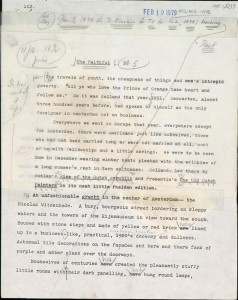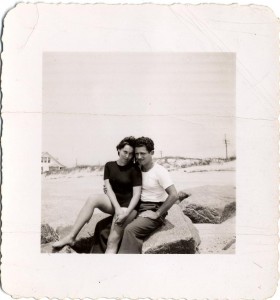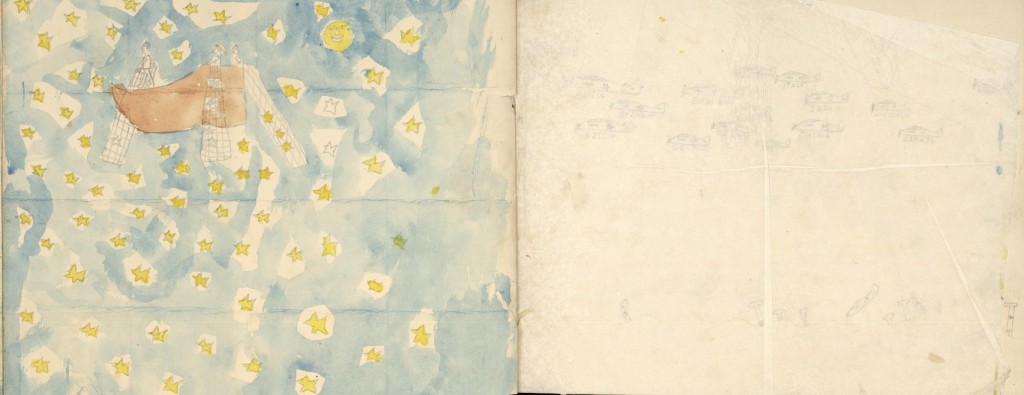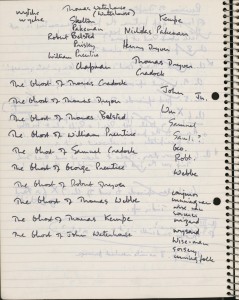Going back to the origins of research libraries, there is a long history of scholars building collections to suit personal interests, constructing around themselves an athenaeum of books that supported their individual research goals.
And when that scholar moved on—to another job or another world—the collection sometimes withered, without a champion to continue telling its story.

Unlike an individual collector, a research library and museum like the Ransom Center builds collection strengths over generations. By continuing to add complementary, connecting pieces, the staff at the Ransom Center ensure that the arrival of an archive on The University of Texas at Austin campus is not the end of the story; it’s just the beginning.
“There is a creative DNA that runs through the Ransom Center collections,” says Director Stephen Enniss. “Archives are very organic things that are still evolving and growing. Implicit in that is a responsibility to continue to add successive material. So a lot of what we do follows those threads of DNA to establish rich veins of research collections.”
In a given year the Ransom Center will acquire as many as five principal archives, headliners like Gabriel García Marquéz and Ian McEwan that get all the media attention. Yet these major procurements account for only a small percent of the total number of acquisitions made in 2014. The commitment to collecting involves continuing to acquire materials for existing archives. “Whether measured in dollars or labor there is a substantial amount of work that goes into developing the collections that are already here,” says Enniss. “I think people may be surprised at what a significant activity it is.”
Norman Mailer’s archive is one robust example of the Ransom Center’s commitment, with 22 additional acquisitions over the past six years. The Center has also recently added materials to the collections of Elizabeth Hardwick, Doris Lessing, Penelope Lively, David Mamet, and many others.

Often these acquisitions are of a much smaller scale: a file of correspondence, a single work of art, or the manuscript of a short story. Though they don’t necessarily make the news, these smaller, connecting materials mean a great deal to researchers like Vanessa Guignery, who has been coming to the Ransom Center since 2006.
While studying B. S. Johnson’s archive, Guignery found herself most affected by the smallest piece of paper in the collection, which had been added in 2004 nearly 30 years after the Ransom Center made the initial acquisition. “I knew Johnson committed suicide but I didn’t expect to find in the collection the original thin and pale yellow telegram, sent by Johnson’s wife to Zulfikar Ghose, with the words: “BRYAN DIED SUICIDE,” says Guignery. “I can still remember the pain and shock I felt at that time, as if I had received the dreadful news myself.”
These types of moments are exactly why Associate Director for Acquisitions and Administration Megan Barnard strives to keep adding supplementary materials to the Ransom Center collection.
“If we don’t follow up and continue to build a collection, that work will end up somewhere else,” Barnard says.

Take, for example, Doris Lessing, whose archive is split between the Ransom Center and the University of East Anglia. Although the split is a result of her personal request, it illustrates the obstacle researchers encounter any time materials are not consolidated. To fully research Lessing’s work, a researcher’s travel budget may need to be doubled.

“That’s challenging, especially in the humanities, where travel funding can be difficult to come by,” Barnard says. “It’s important for researchers to be able to dig into one place and have access to the materials. That’s one of the driving forces behind this idea.”
This commitment to collecting is shared by many research libraries, but, Barnard believes, the Ransom Center’s ongoing efforts are “as strong as any institution’s out there.”
The championing of archives started with Harry Ransom with the creation of the Center in 1957, and continues today.
“The collections we’re assembling will be here for scores of years. What’s going to be important is not who acquired the materials, but the quality of the choices that were made and the completeness of the archive,” Enniss says. “The Ransom Center has the obligation to continue to develop those veins of research material.”
By Mark Collins
This story originally appeared in the fall 2015 issue of Ransom Edition.

